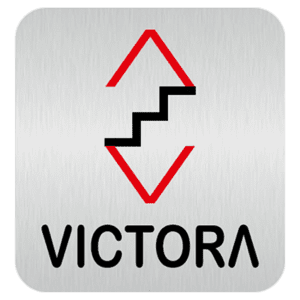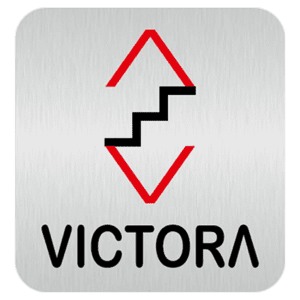Introduction:
Elevators have become integral to our lives, especially in high-rise buildings. However, the experience of using an elevator can vary significantly based on the efficiency of its control system.
This guide will delve into the various types of elevator control systems, such as manual, automatic, and destination dispatch systems. We will also explore the benefits of elevator remote monitoring and non-proprietary components.
Finally, we will discuss the importance of elevator maintenance and its frequency. Buckle up as we take you on an elevating journey of your building experience!
Types of Elevator Control Systems
Types of Elevator Control Systems Elevators have come a long way from being manually controlled by elevator operators. Different types of elevator control systems are available today, depending on the needs of a specific building.
Manually-controlled elevator: This is one of the earliest types of elevator control systems wherein elevator operators operated elevators using a deadman’s switch or constant pressure controls. The controller on this type of elevator had few relays. Later, manually controlled elevators with automatic levelling were introduced, allowing operators to control an elevator’s speed and levelling.
Dual operation elevator: This type of elevator can operate as a manually-controlled elevator with an operator or a single automatic elevator without an operator. The purpose of this type of operation was to save costs during off-peak periods.
Signal operation elevator: This type of elevator requires an operator but less effort. To operate a signal operation elevator, the user would first push a switch in the direction they wanted to travel, then press a floor button. Floor buttons were pop-out buttons, with no floor buttons for the top and bottom floors.
Automatic-controlled elevator: As technology progressed, automatic elevators with relay logic and microprocessor control systems were developed. These systems used electromagnetic relays or microprocessors to control an elevator’s speed, position and door operation. Elevators with relay logic controllers use a ” selector ” device that determines the car’s position using magnetic tapes, while microprocessor controllers use a programmable logic controller (PLC) device.
An efficient elevator control system is essential for improving the experience of building occupants. It is vital to select the correct type of elevator control system depending on the specific needs of the building. The proper control system ensures elevators operate smoothly and efficiently, minimizing waiting times and increasing security.
Elevator destination dispatch system
The elevator destination dispatch system is a modern type of elevator control system that optimizes performance and improves an occupant’s experience. This system streamlines the transportation process in the building and increases efficiency by reducing waiting time and journey time. It provides an optimal route for multiple elevators based on the occupancy flow at each level.
The system starts with the occupant selecting their desired floor on an input panel in the lobby. The system then directs the occupant to the elevator assigned to them based on their destination. Occupants are assigned to a specific elevator that takes them to their desired floor without making unnecessary stops. This results in less waiting time, less travel time, and fewer intermediate stops.
Elevator destination dispatch systems benefit high-rise buildings with heavy traffic by reducing elevator congestion and increasing passenger throughput. Buildings with this system installed have a modern and efficient imaging strategy that significantly reduces the waiting time of the occupants. Examples of buildings that use the Elevator destination dispatch system include Burj Khalifa, One World Trade Center, and Taipei 101.
Elevator remote monitoring system
An elevator remote monitoring system provides building managers and maintenance teams valuable data. By monitoring the elevator’s location, load, and door status, facility managers can create metrics for each elevator car to determine the number of rides, the length of rides, up and down hall calls, and other key performance indicators. By analyzing this data, building managers can optimize wait times for passengers during peak hours.
An elevator remote monitoring system also alerts maintenance teams to potential issues before they become significant problems. Remote monitoring allows service technicians to detect and diagnose problems early, saving time and money on repairs and reducing downtime for the elevator. In addition, remote monitoring helps ensure consistent service across multiple elevator cars within a building, providing a better experience for building occupants.
Non-proprietary components
Non-proprietary components are an essential part of elevator control systems. Using non-proprietary components allows for greater flexibility in terms of maintenance and repair, as any qualified technician can easily replace parts. Elevator companies that use non-proprietary components also enjoy cost savings and shorter lead times when sourcing parts. Some examples of non-proprietary components used in elevator control systems include door sills, nameplates, and signalization.
The benefits of using non-proprietary components are plenty, including better accessibility of spare parts, competitive pricing, and the ability to upgrade and retrofit older elevator systems. In short, non-proprietary components are cost-effective for building owners looking to install, maintain or repair their elevators efficiently without breaking the bank.
Elevator Maintenance
Regular maintenance of elevators is essential to ensure smooth and efficient performance. This can prevent major breakdowns, minimize downtime and save on repair costs. It is recommended that elevators undergo maintenance checks at least twice a year by certified technicians. Maintenance involves examining the components of the elevator control system, such as the motor, cables, brakes and controls, and checking for wear and tear.
Maintenance checks may also involve lubricating moving parts and testing the safety features. Opting for a maintenance contract with the elevator provider can ensure prompt attention and faster resolution of any issues. The lifespan of an elevator can be extended, and it can operate at its optimum performance with regular maintenance.
Conclusion
In conclusion, Elevator Control Systems are essential to a building’s infrastructure. An efficient lift control system can improve the building experience by reducing wait times, increasing elevator speed and capacity, and providing a safer and more reliable elevator service.
Elevator destination dispatch and remote monitoring systems are two examples of how advanced technology can make elevator control systems even more effective. Using non-proprietary components in elevator control systems is essential to ensure that maintenance and repairs can be done efficiently and cost-effectively. Regular elevator maintenance is crucial to keep elevator systems running smoothly and safely.
Building owners and managers can provide their occupants with a smooth and enjoyable elevator experience by investing in an efficient elevator control system and following a maintenance schedule.



